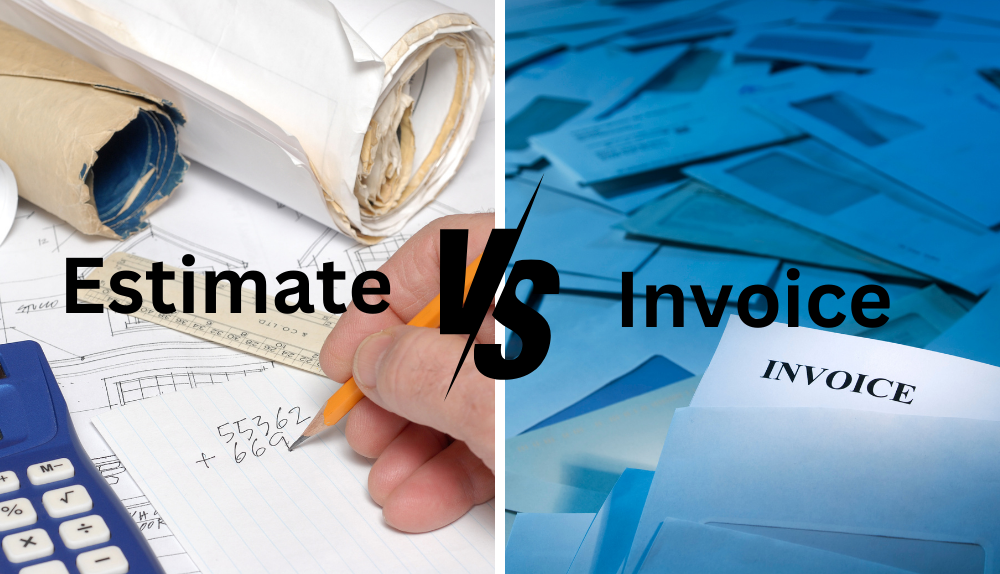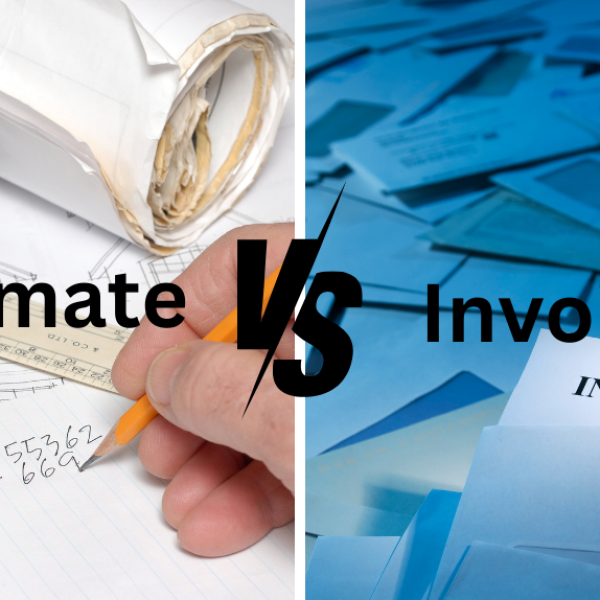Credit card fees have long been a significant expense for businesses, but these costs have grown even more burdensome for small and large business owners in the last decade. In 2023 alone, merchants shelled out $172 billion in credit and debit interchange fees. Your business has likely faced multiple increases in credit card processing rates over recent years.
The disparity in processing costs is stark compared to giant retailers like Amazon, which can afford to charge less due to the sheer volume of transactions they process. In the U.S., the escalating interchange fees—a significant expense for retailers—are now at the heart of ongoing disputes involving merchants, card networks, and the large banks that issue cards.
While sometimes there are legitimate reasons for increases in merchant fees by credit card processors, other times the reasons are less justifiable. It’s crucial for business owners to understand why rates are increased and to ensure they are getting the fairest deal possible on credit card processing services. This knowledge can empower you to negotiate better terms or explore more cost-effective processing options.
In This Article
ToggleUnderstanding Credit Card Fees for Merchants

Before discussing what to do if your credit card processor raises your rates, it’s essential to understand what credit card fees for merchants entail.
Businesses that accept credit card payments, such as retailers and restaurants, are called merchants in the payment processing industry. Accepting credit card payments in your restaurant subjects you to what are known as merchant credit card fees.
These fees consist of various charges. Each credit card network, like Visa or Mastercard, has a standard fee structure imposed by the issuing bank or financial institution every time a card is used. These charges typically include a percentage of the transaction amount plus a fixed fee.
Additionally, your restaurant’s/retailer’s merchant services provider, which processes these credit card transactions, will charge a fee. This is generally a percentage of the transaction value and a flat fee per transaction.
Collectively, these fees constitute the credit card processor fees you incur when you accept credit card payments. Understanding these fees is crucial for effectively managing costs and negotiating better terms with your processor.
What Determines Credit Card Fees?

Numerous factors influence credit card fees. For an in-depth exploration, consider visiting our blog post on how credit card processing works. Here, however, we’ll briefly discuss some of the key elements:
- Interchange Fees:
These constitute the bulk of the total fee charged per transaction. Interchange rates are highly variable and can be somewhat reduced through stringent credit card policies. Factors influencing these rates include whether the card is physically present, using high rewards cards, the card type (e.g., business or corporate), and how the transaction is processed (keyed, swiped, or inserted).
While rates vary by network, regulatory bodies worldwide are beginning to impose restrictions to prevent excessive charges, with the EU recently setting broad caps on interchange rates.
- Assessment Fees:
Set by the credit card networks, these fees differ slightly across networks and are generally higher for credit transactions than debit transactions. They also incorporate a fixed monthly network rate, acting like a subscription fee.
- Incidental fees
Incidental fees may be applied to your account based on specific actions. For example, batch fees are small daily fees for processing your deposits. The AVS fee is a nominal charge for an anti-fraud service that verifies the zip code and address of your customer’s cardholder information for each transaction.
Voice authorization fees are another anti-fraud measure; if incurred, your POS terminal will prompt you to verify the transaction directly with the issuing bank, which will then decide whether to process, decline, or approve the transaction. Additionally, you may be charged a chargeback fee if a customer disputes a transaction. Should you resolve the dispute, your payment processor may refund the fee.
- Processor Fees:
Merchant service providers also need to be compensated for their role. These fees vary by company and may be negotiable based on transaction volume and the merchant’s security and fraud prevention measures. More details on this will follow below.
- Account service fees
Account service fees are ongoing charges levied by the processor to maintain your merchant account, and they can vary based on the services provided. These may include a payment gateway fee and a monthly charge for using a payment gateway to accept online credit card payments. You might be charged a monthly minimum fee if your transactions do not meet a certain threshold.
Processors also charge a monthly statement fee to cover the cost of customer services, such as preparing monthly statements. Additionally, if you fail to meet PCI standards in any given month, you could face a PCI non-compliance fee, whereas complying with these standards through your processor might incur a PCI compliance fee.
Payment Processing Pricing Models
Understanding the various pricing models available in payment processing is crucial as they determine how fees appear on your monthly statement. Consider your business type, transaction volume, and specific needs when pricing. Each model offers distinct advantages and considerations, which can help you select the most suitable option for your business. Here’s an overview of the standard pricing strategies:
- Interchange Plus
This pricing model is known for its transparency, as it passes the actual interchange fees from card networks directly to you, the merchant, with an additional small markup by the processor.
It provides clarity, showing the exact costs per transaction, which is why it’s preferred by larger businesses that benefit from detailed breakdowns. But, despite its transparency, this model can be complex to understand and manage due to the varying interchange rates for different types of cards.
- Tiered Pricing
Tiered pricing categorizes transactions into three levels: qualified, mid-qualified, and non-qualified, based on factors like card type, transaction method, and more, with each category having a fixed rate. It’s straightforward and predictable, making it easier to budget for processing costs. However, this model lacks transparency, as the criteria for categorizing transactions aren’t always clear, which can sometimes lead to unexpected higher costs.
- Flat Rate
A flat rate model charges a consistent fee for all transactions, regardless of the card type, transaction amount, or processing method. Its simplicity and predictability make it attractive to small businesses and startups, and it provides a clear understanding of monthly costs.
While easy to comprehend, flat rate pricing might not be the most economical choice for businesses with high transaction volumes or large average transactions.
Identifying the Cause of the Rate Increase
A rate or fee increase in credit card processing can stem from various factors, some within your processor’s control and some beyond it. Initially, you need to ascertain whether the increase is due to your processor’s or MasterCard’s, and Visa’s actions.
Several factors add up to the fees associated with credit card processing, including:
- Type of Business: As mentioned before, credit card processing rates vary by the type of business, as defined by its Merchant Category Code (MCC). Different rates apply to industries such as supermarkets, retail stores, travel agencies, and fuel stations, reflecting each sector’s typical transaction patterns and risks.
- B2B (business-to-business) Transactions: Businesses that operate on a B2B model, particularly those that deal in large volumes or supply to government entities, can qualify for Level 2 and Level 3 processing. These levels offer lower processing rates due to the additional information captured during transactions, which reduces risk. However, these lower rates are unavailable to businesses primarily operating traditional e-commerce or physical sales terminals.
- High-Risk Businesses: Companies categorized as high-risk by payment processors—often due to the nature of their products or services or a history of high chargebacks—typically face higher processing fees. Such businesses may need to open dedicated accounts designed explicitly for high-risk merchants to manage their transactions securely.
- Type of Transaction: The method of processing a transaction also affects fees. Card-present transactions, such as swiping a card or using NFC/chip technology at a point-of-sale (POS) terminal, usually incur lower fees than card-not-present transactions, including online or telephone orders. This difference is due to the higher risk of fraud in transactions where the card is not physically presented.
- New management: Sometimes, credit card processing companies are acquired by more giant corporations, which can lead to significant changes, including rate increases. If your processing fees suddenly rise and the provider mentions an acquisition, this could indicate that your company has been bought out. In such scenarios, negotiating a lower rate might be challenging with the new parent company, which may not yet be familiar with your business. However, you can ask them to justify the rate increase by detailing the additional services they will provide, ensuring you receive value for the increased costs.
- Bait and Switch: Bait and switch are other issues to watch out for. This deceptive practice involves advertising a low price to attract customers, only to promote a different, often more expensive product at the point of sale. For instance, a processor may advertise a low rate of 1.05%. Still, this rate might only apply to debit card transactions, not credit card transactions, misleading customers about the cost of services.
On the other hand, MasterCard and Visa might raise their interchange rates or assessment fees, and if this happens, your processor cannot reduce these fees. Nonetheless, your processor may impose additional charges on top of these increases, potentially amplifying the overall growth.
If MasterCard and Visa have increased their fees, you should verify that the additional costs passed onto you are precisely at cost, without any extra mark-ups. You can do this by comparing the interchange rates on your monthly statement with the published rates from MasterCard and Visa. Be aware that there is no uniformity in how interchange categories are described on processing statements. The terminology used by MasterCard or Visa for an interchange category may differ from how your processor represents it on your statement.
Is it True that MasterCard and Visa, Not My Processor, Raised the Rates?
Your processor may attribute an increase in your processing fees to Visa and Mastercard, which are raising their prices.
While this can be true, it isn’t always the case!
Remember, your processor should provide notifications about any price increases in your monthly statement. Sometimes, these notices might only announce an upcoming rate change. In other instances, they could detail the changing interchange categories and rates.
What are the Average Credit Card Processing Rates?
Typically, businesses incur a credit card processing fee ranging from 1.5% to 3.5% per transaction. For transactions conducted in person, fees generally average around 2%. Conversely, card-not-present transactions, which include online payments, tend to have higher fees, averaging about 3%.
The fee structure also varies by business size and transaction volume. Due to their high-volume transactions, large retailers often negotiate lower rates and thus enjoy reduced processing costs. In contrast, small retailers typically face higher fees. For instance, if a business with annual sales of $500,000 reduces its processing rate from 2% to 1.5%, it could save $2,500 annually, lowering its fees from $10,000 to $7,500 simply by reducing the cost by 0.5%. This demonstrates how even a tiny adjustment in the processing fee rate can lead to significant savings.
When is a Rate Increase Justifiable?
Let’s examine scenarios where a rate increase might be justified. Consider a merchant with a flat transaction rate, such as 2.2% plus interchange fees. Interchange fees are essentially the costs that Visa and MasterCard charge the payment processor.
If you’re paying a flat rate of 2.2% per transaction, remember that your processor is not retaining the complete 2.2%; they have to cover the interchange fees to Visa and MasterCard first and then keep whatever is left.
Should interchange fees significantly increase while you’re on a flat rate, the payment processor’s costs might exceed your pay rate. In such a case, it would be reasonable for them to raise your rate to cover these increased costs. However, I must emphasize that this scenario is scarce. It’s uncommon for merchants on flat pricing to experience rate increases due to interchange cost hikes because payment processors typically set rates high enough to buffer against minor fluctuations in interchange fees. Generally, they should be able to absorb any increase in interchange fees without passing the cost onto you.
Innovative Ways to Reduce Your Credit Card Processing Fees in 2024
As a business owner, managing costs effectively is crucial for maintaining your bottom line, with one of the more significant expenses being the processing fees associated with card payments. Although these fees are generally unavoidable, there are strategies you can employ to minimize them:
Offer Cash Discount
Offering a cash discount to customers is a marketing strategy where small businesses raise the prices of their goods or services and then provide a discount to customers who pay with cash at the point of sale. This discount can also be extended to payments made by check. The price displayed on a menu or sales tag represents the actual cost, and customers who pay in cash enjoy a reduced price at the register.
It’s important to distinguish between a cash discount and a surcharge. A surcharge is any method of raising the standard price to a cardholder that is not applied to those making payments with cash, checks, or other comparable procedures. A discount is defined as a decrease from the regular price. Implementing a cash discount may decrease your card processing transaction volume and encourage more cash payments. However, this practice might not be well received by all customers, so weighing the benefits and potential drawbacks before starting a cash discount program is advisable.
Process Transactions Promptly
Merchants are required to settle or batch their transactions within a specific time frame. Batching involves consolidating all transactions over a designated period and submitting them to the bank for processing. This action ensures that the funds are transferred from the issuing bank to the merchant’s receiving bank.
To execute this, you can manually initiate the batching process on your point of sale (POS) system or set it up to perform this task automatically. Opting for automatic batching is advantageous as it can be scheduled to occur nightly, minimizing the likelihood of human error. Ensuring that your POS system is configured to batch transactions automatically accelerates the receipt of funds from sales. It can lead to lower processing rates due to more frequent settlements of credit card transactions.
Explore Bundled Credit Card Processing Options
When looking for credit card processing solutions, it’s essential to know that different processors offer various structured account options, though not all provide this flexibility. Going into negotiations with a good understanding of how credit card processing works can make you better equipped to secure more favorable rates.
- Flat Rate Plans: In a flat rate plan, each transaction incurs a pre-determined fee, which may differ based on the type of transaction (e.g., debit, credit, or keyed entries) but remains consistent over time. This plan is straightforward and well-suited for businesses with fewer transactions. However, companies with higher volumes may benefit from exploring other options.
- Interchange-Plus Plans: This plan is often considered the most transparent. It breaks down the cost into the base interchange rate, which varies depending on the type of card used, plus a markup that covers the processing. This detailed structure helps merchants understand precisely what they’re paying for and potentially adjust their policies to reduce costs. Although it provides greater insight into what affects fees, it can be more complex.
- Tiered Pricing Plans: Tiered plans are less transparent, combining interchange rates and transaction types into a single fee. This makes it difficult to discern the factors contributing to the total charge. Such plans can also be challenging to negotiate and might allow processors to increase rates under certain conditions without transparent disclosure.
Understanding these options helps in selecting the best credit card processing solution for your business needs, balancing cost, transparency, and ease of use according to your transaction volume and operational preferences.
Capture More Customer Data
For e-commerce and phone-based transactions, gathering the cardholder’s complete billing address is crucial to circumvent higher interchange costs, which comprise a significant portion of your processing fees. Interchange fees are fixed costs paid to card-issuing banks to process transactions with your customers’ debit or credit cards. Although the complexities of interchange fees could fill an entire article, a key point for merchants using interchange-plus or tiered pricing models is that collecting more information at checkout can substantially reduce the interchange fees.
Data with each transaction is advantageous for businesses selling to other companies or government entities, including levels two and three. This data includes the invoice number, your Tax ID, the item’s commodity code, and other pertinent information. Such detailed reporting can decrease interchange costs by more than 20%.
For instance, on the Visa network, a transaction that includes only basic information—a nonqualified transaction—may incur a fee as high as 2.95%. However, adding level-two data can reduce the cost to 2.05%. Other networks might show similar or different variations in fees. Additionally, rather than processing this information manually, utilizing payment gateways that can automatically populate these fields can streamline the process and ensure transactions qualify for the lowest possible interchange rates.
Negotiate Fees With Your Credit Card Processor
Most credit card fees are negotiable. You have the opportunity to discuss lower rates with your credit card processor based on several factors that they consider essential:
- The number of years your business has been operating
- The volume of transactions your business processes
- Your business’s risk of fraud
Reach out to your processor to discuss how your business is expanding and processing a higher volume of credit card transactions, possibly with more significant amounts per cycle, which could justify lower fees. Highlight the value your business brings to their operation and specify how.
You might also present sales forecasts to illustrate the expected increase in credit card transactions in the future. If your provider still hesitates, make it clear that you prefer not to switch services but are prepared to do so for a more favorable deal. Remember, you are not obligated to stay with your current credit card processor. It’s wise to continuously evaluate and compare offerings to ensure you’re getting the best terms possible.
Switch Processors
Ultimately, the choice of your business partners, particularly your payment processor, can significantly influence your operational success. While you may not have the option to forgo accepting major credit cards due to their potential impact on your business, choosing a suitable payment processor is crucial and something you should consider changing if it doesn’t benefit your business.
Your payment processor plays a critical role in all transactions, affecting the quality of service you receive and the fees you pay. Finding one that aligns with your interests and strives to keep your costs down is important. We’ll explore this subject more later. Here are some essential attributes to look for in a payment processor to ensure you get the best value for your money:
- Competitive Rates: Seek a payment processor that offers competitive rates and maintains a transparent fee structure. Steer clear of those with hidden charges or lengthy contracts that might trap you in disadvantageous conditions.
- Security and Compliance: To safeguard your customers’ sensitive data, your payment processor must comply with industry standards, such as PCI DSS.
- Reliability: Your payment processor’s reliability is paramount. They should have a solid track record of uptime and reliability to minimize disruptions in your business operations.
- Support: Responsive and informed customer support is essential. Choose a processor that offers quick and practical assistance to address any issues.
- Ease of Integration: To maintain operational efficiency, ensure the payment processor integrates smoothly with your existing eCommerce platforms or POS systems.
Chargeback Policies and Fraud Prevention
Minimizing chargebacks is crucial for protecting your revenue and avoiding related fees. To achieve a lower chargeback rate, ensure you have strong customer service and clear return policies. Clear communication of your terms and ensuring customer satisfaction with their purchases significantly decrease the likelihood of chargebacks. Excellent customer service plays a critical role here; it helps resolve potential issues before they escalate into chargebacks. Make it a priority to respond quickly to customer inquiries and handle disputes effectively and amicably.
Additionally, vigilance against fraud is essential. Implementing effective fraud detection and prevention strategies is vital for reducing chargebacks. By taking these steps, you can safeguard your business from unnecessary losses and maintain a positive relationship with your customers.
Ensure Proper Setup of Your Processing Account and Terminals
Start by discussing your POS software and hardware providers’ operations concerning sales processing. Many POS companies double as merchant services providers, and it’s crucial to understand their fee structures and what they charge for. Be cautious about contracts in these scenarios. Often, these companies will not require a contract for their POS system but will obligate you to use their processing system, potentially trapping you if you become dissatisfied with their software. Exiting these contracts can be expensive due to hefty early termination fees.
Other companies, for example, offer integration with various payment processors, allowing you to choose a provider that suits your business needs. This flexibility allows for smoother business operations and enables you to negotiate better rates as different companies compete for your business, potentially leading to more favorable terms.
Once you have chosen a POS provider and credit card processor, ensure each terminal has the necessary hardware. This includes modern payment terminals accepting EMV chip cards and mobile payments. Also, consider payment machines that offer customizable features, such as disabling manual card entry or card swipes, which can help protect against fraud. Such features can also help lower your processing rates and protect your business from the liabilities of fraudulent transactions.
Conclusion
Business owners must understand credit card processing fees to maintain profitability in today’s competitive landscape. When credit card processors increase rates, it’s essential to know what’s behind the changes and take steps to reduce their impact. To fully understand the fees, including interchange, assessment, incidental, processor, and account service fees, business owners can better manage their processing costs and identify areas for optimization.
To manage credit card processing costs effectively, businesses can explore pricing models like Interchange Plus, Tiered Pricing, and Flat Rate. They can also identify the reasons for rate increases, negotiate fees with credit card processors, and consider switching processors when necessary. These strategies can help businesses make informed decisions and select the most suitable pricing strategy based on their needs and transaction volume.
In the end, to reduce processing fees and avoid chargebacks and fraud, businesses can utilize tactics such as offering cash discounts, exploring bundled credit card processing options, capturing more customer data, and ensuring proper setup of processing accounts and terminals. By implementing these strategies and staying alert to processing costs, business owners can improve financial performance and better serve their customers in today’s ever-changing business landscape.
Frequently Asked Questions
Why did my credit card processor raise my rates?
Rates may increase due to higher fraud, market changes, or increased operational costs. Sometimes, processors pass on higher interchange fees from card networks like Visa or Mastercard to merchants.
What can I do if my rates are increased?
Check if the increase is due to interchange fees or added markups by your processor. Review statements and compare rates with card networks’ published rates. Negotiate with your processor or explore other options for better terms.
Should I switch to a different credit card processor if my rates increase?
Consider switching if new rates significantly impact profitability and you find a processor with lower fees and good service. Evaluate contract terms and switching costs before making a decision.
How can I avoid sudden rate increases in the future?
Opt for transparent pricing models like Interchange-plus and regularly review processing fees. Stay informed about interchange rate changes to anticipate cost adjustments.











